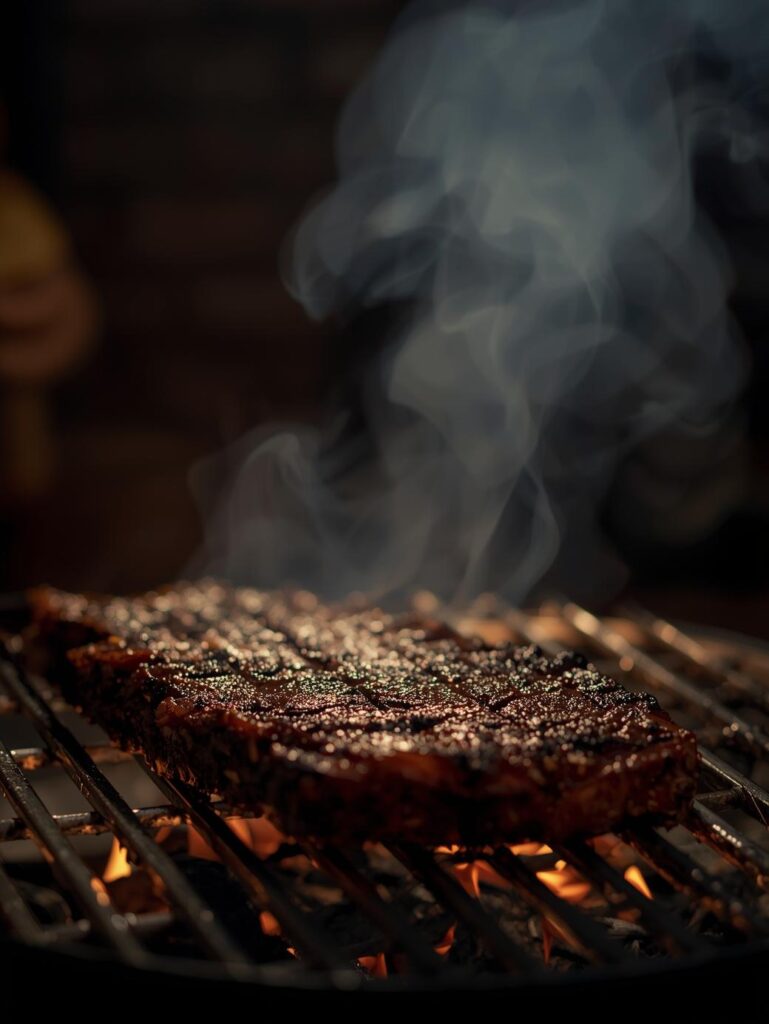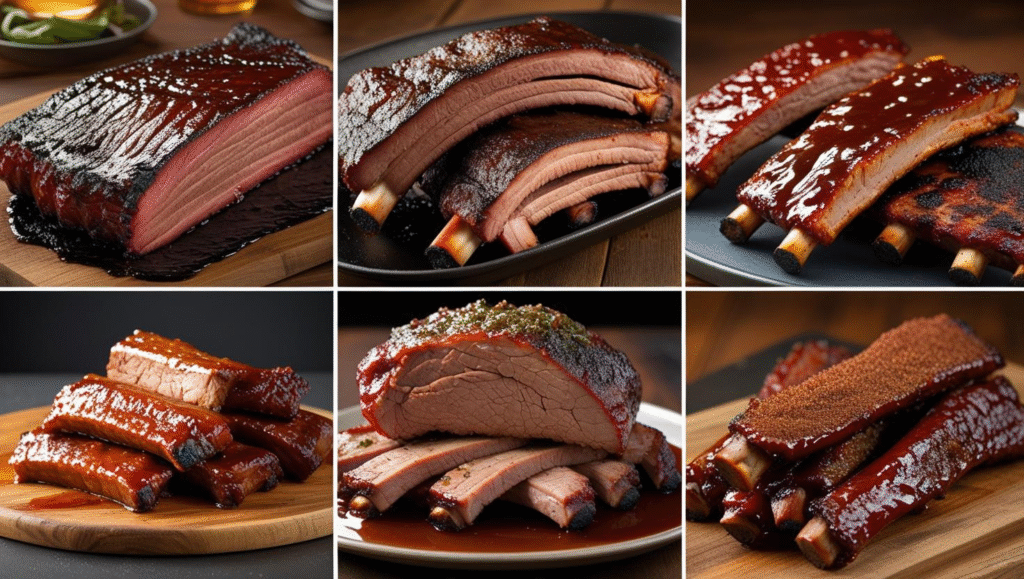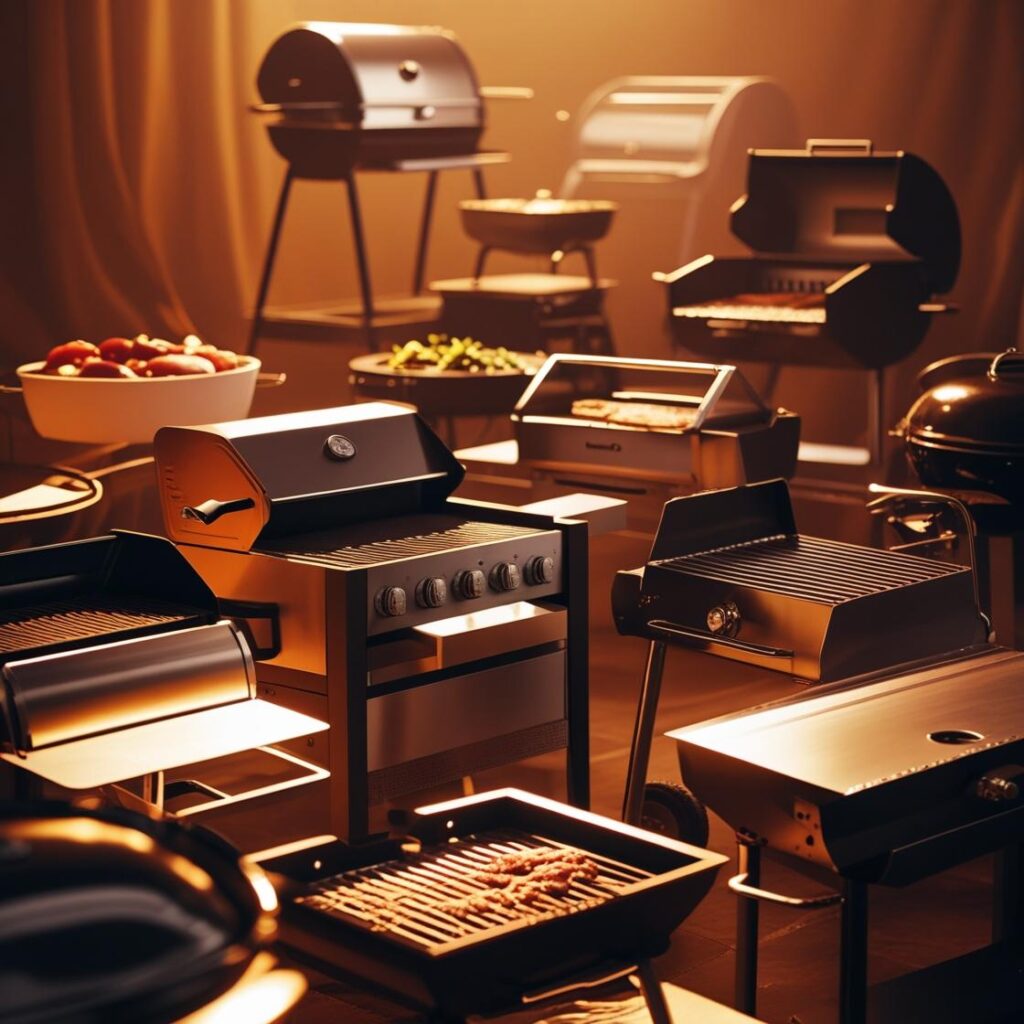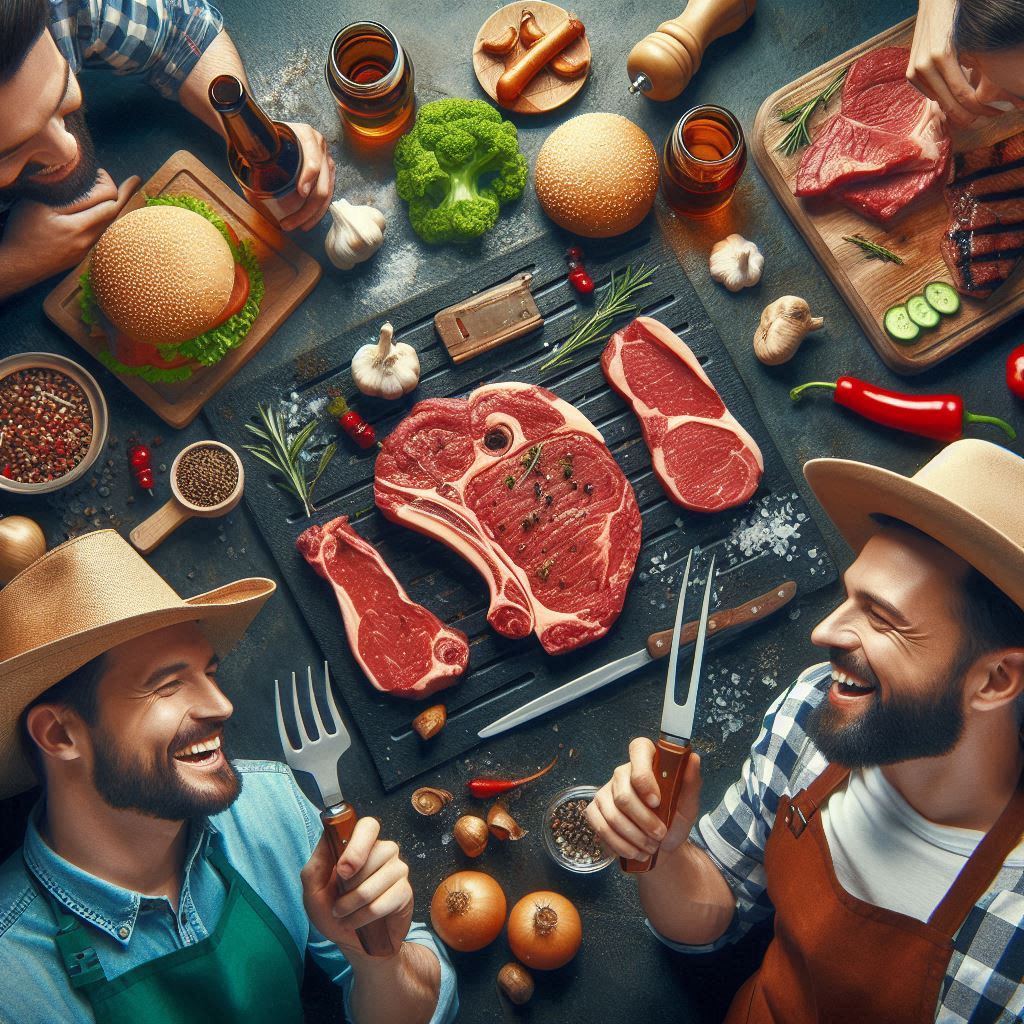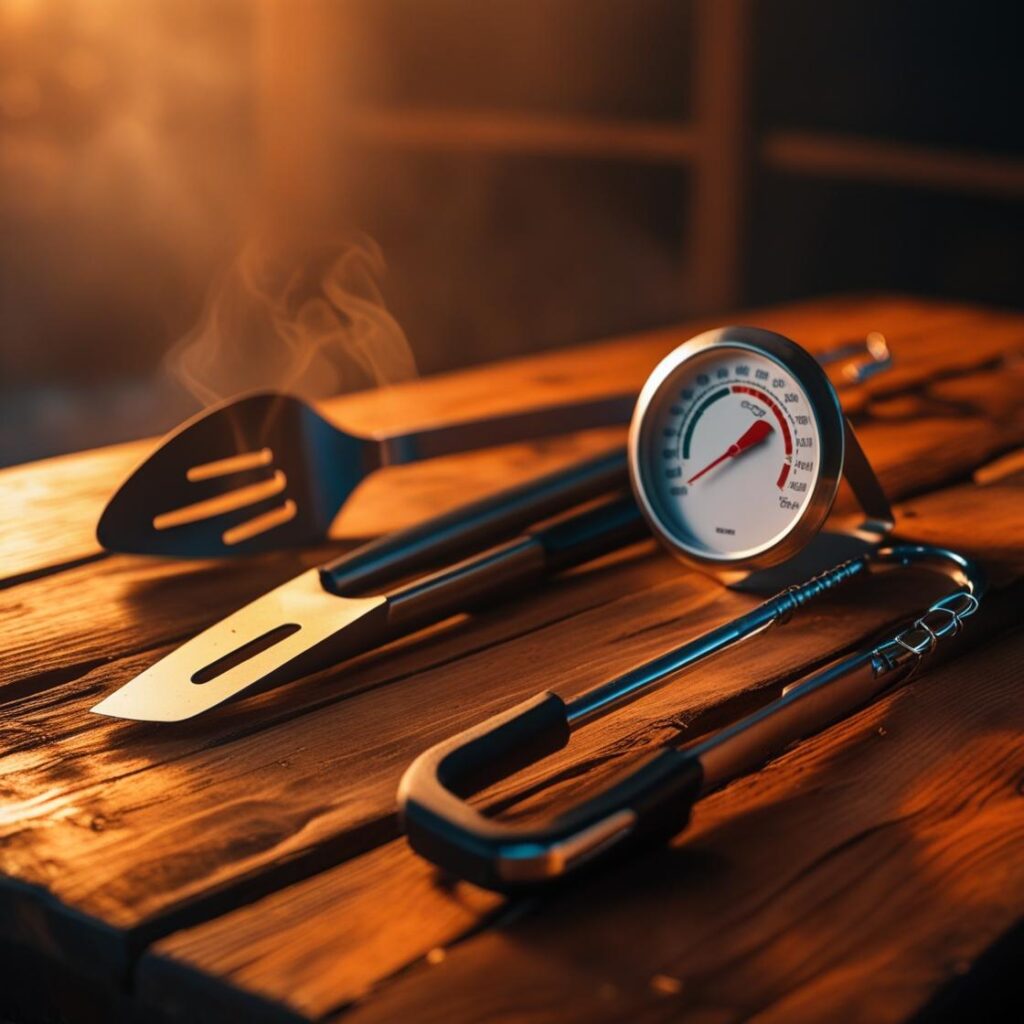5 Smoking Mistakes to Avoid for Tender BBQ
There are few things as rewarding as pulling a perfectly smoked piece of meat from your smoker. The aroma, the deep mahogany bark, and the promise of a tender, juicy bite are what make BBQ a true passion. But for every success story, there are countless tales of disappointment: a brisket that’s tough as leather, pulled pork that’s dry and crumbly, or a rack of ribs that won’t come off the bone. If you’ve ever had a BBQ fail, you’ve likely committed one of the most common smoking mistakes to avoid.
This guide will identify the five biggest errors that can ruin your tender BBQ and provide you with the pro tips you need to ensure your next cook is a resounding success.
Mistake #1: Not Managing Your Smoker’s Temperature
The number one rule in smoking is consistency. Unlike grilling, which uses high, direct heat, smoking relies on “low and slow” cooking. If your smoker’s temperature fluctuates wildly, your meat will cook unevenly, leading to a tough and dry result. This is one of the most fundamental bbq mistakes to avoid.
- The Problem: Many beginners focus on the temperature on their smoker’s dome gauge, which can be inaccurate. They also tend to over-adjust the heat, constantly opening and closing vents, leading to wild temperature swings.
- The Fix:
- Invest in a Good Thermometer: Use a reliable, multi-probe thermometer with probes for both your meat’s internal temperature and the ambient temperature inside the smoker. Place the ambient probe near your meat, not in the dome. You can find excellent thermometers at retailers like <a href=”https://www.google.com/search?q=bbq+thermometer+supplier” rel=”nofollow”>BBQ Supply Co.</a> (This is a hypothetical external link).
- Learn Your Smoker: Every smoker has its own quirks. Take the time to understand how adjusting vents or adding fuel affects the temperature.
- Aim for Consistency: For most meats, a consistent temperature between 225°F and 250°F is ideal. This low temperature allows collagen and tough connective tissues to break down, resulting in incredibly tender BBQ.
Mistake #2: The ‘Lookin’ is Not Cookin” Error
It’s tempting to peek. You’ve been smelling that incredible smoke for hours, and you want to see how that beautiful bark is coming along. But every time you open the lid of your smoker, you lose heat, moisture, and, most importantly, precious smoke. This is one of the easiest smoking mistakes to avoid, but also one of the hardest for a beginner to resist.
- The Problem: Opening the smoker lid causes a sudden drop in temperature. Your smoker then has to work hard to get back up to temp, which can extend the total cook time. The loss of smoke and moisture can also contribute to a tough, dry exterior and a lack of flavor.
- The Fix:
- Trust Your Thermometer: The only thing you need to monitor is the temperature on your remote probe. Your smoker’s lid is for emergencies only.
- Patience is a Virtue: BBQ is a game of patience. Let the smoker do its job. The beautiful bark will form on its own. For more on getting that perfect crust, check out our guide on Why Your Pork Bark Isn’t Crispy and How to Fix It.
- Suggested Image Alt Text: A smoker’s lid being opened to show a piece of meat inside, an example of common smoking errors.
Mistake #3: Not Using a Meat Thermometer
This is the biggest rookie error and a surefire way to have your smoked meat come out tough and dry. Cooking by time alone is a gamble, as every piece of meat is different. You simply cannot know when a pork butt or brisket is truly ready without measuring its internal temperature. This is the ultimate smoker mistake that can ruin your cook.
- The Problem: You pull your meat off the smoker too early, and it’s tough and undercooked. Or you leave it on too long, and it’s dry and overcooked.
- The Fix:
- Use a Thermometer: This is non-negotiable. Insert a probe into the thickest part of the meat, avoiding bone, and monitor the temperature.
- Know Your Target Temps:
- Pork: For tender, shreddable pulled pork, the internal temperature should be in the 195°F to 205°F range.
- Brisket: For a tender, sliceable brisket, aim for 200°F to 205°F.
- Ribs: Ribs are generally done by feel, but a temp of around 200°F is a good indicator.
- Suggested Image Alt Text: A meat thermometer probe inserted into a smoked pork butt, a key tip to avoid bbq mistakes to avoid.
Mistake #4: Mismanaging the Stall
The stall is a rite of passage for every BBQ enthusiast. It’s that frustrating period where your meat’s internal temperature plateaus, sometimes for hours on end. Panicking and cranking up the heat is one of the worst smoking mistakes to avoid.
- The Problem: The stall is a normal process of evaporative cooling. As moisture on the surface of the meat evaporates, it cools the meat down, keeping the internal temperature from rising. Many people panic and turn up their smoker’s temperature, which can lead to a tough and dry crust and a dry interior.
- The Fix:
- Be Patient: The stall is a sign that your smoker is doing its job. The stall will eventually end.
- Wrap It Up: If you’re in a hurry or want to push through the stall, you can use the “Texas Crutch.” Wrap your meat tightly in aluminum foil or pink butcher paper. This will prevent evaporation and allow the temperature to rise quickly.
- Trust the Process: For more information on this process, see our guide on the Common Mistakes That Ruin Your Pork BBQ.
Mistake #5: Skipping the Rest
You’ve made it through the long cook, your meat is at the perfect temperature, and it smells amazing. It’s time to eat! But if you slice into your meat immediately after taking it off the smoker, you’ve just made the final, unforgivable smoker mistake.
- The Problem: As a steak or a roast cooks, the muscle fibers tighten, forcing the juices to the center. Cutting into the meat at this point causes all those juices to rush out onto your cutting board, leaving you with a dry, tough piece of meat.
- The Fix:
- Rest Your Meat: This is non-negotiable. Remove the meat from the smoker and let it rest, loosely tented with foil, for at least one hour for a pork butt or brisket. This allows the muscle fibers to relax and reabsorb all the juices, ensuring a tender, juicy result. You can learn more about this in our guide on When to Pull Pork Butt From the Smoker for Best Results.
- Resting Time: A good rule of thumb is to rest for at least 30-60 minutes for a pork butt or brisket.
- Suggested Image Alt Text: A smoked pork butt resting on a cutting board, a crucial step to avoid tough bbq mistakes.
Troubleshooting Table: The 5 Smoking Mistakes to Avoid
Conclusion: Master the Basics to Master Your BBQ
The path to perfectly tender, juicy BBQ isn’t paved with complex recipes or expensive equipment. It’s about mastering the fundamentals and avoiding these 5 smoking mistakes to avoid. By controlling your temperature, using a thermometer, embracing the stall, and giving your meat the rest it deserves, you can transform your BBQ from a frustrating gamble into a delicious, guaranteed success. Follow these beginner smoking tips, and you’ll be well on your way to becoming the pitmaster you always wanted to be.
FAQ: Fixing Tough BBQ and Avoiding Common Smoking Mistakes
Q: Can I use the same process for brisket and pork butt? A: Yes, the principles are the same for most large, tough cuts of meat. The smoking mistakes to avoid apply to brisket, pork butt, ribs, and even chicken.
Q: Does brining help prevent dry meat? A: Yes, brining is an excellent way to prepare meat before smoking. It helps the meat retain moisture, making it more resistant to drying out. Learn more about proper brining in our other guides.
Q: How do you know when to pull pork from the smoker? A: The best way to know when to pull pork from the smoker is to use the probe test. When the meat probe slides in like a hot knife through butter, the meat is ready, regardless of the temperature.
Q: Why is my smoked brisket tough? A: If your smoked brisket is tough, it is likely because you pulled it off the smoker too early. It needs to reach a high enough internal temperature to allow the collagen to break down into gelatin.
Q: How do I fix a tough pork butt?
A: If your pork butt is still tough, it likely didn’t cook long enough for the collagen to break down. Return it to the smoker or wrap it in foil with a bit of liquid and continue cooking until it reaches 195–205°F and feels probe-tender.
Q: Why is my smoked brisket tough and dry?
A: Undercooking, low fat content, skipping the wrap, or slicing in the wrong direction can cause dryness. Brisket needs to reach at least 200°F internally and rest properly to stay tender.
Q: What are common smoking errors for beginners?
A: Too much smoke, low chamber temp, lifting the lid too often, skipping wrapping, and not using a thermometer are the most frequent beginner mistakes.
Q: What BBQ mistakes should I avoid for tender meat?
A: Rushing the cook, trimming too much fat, using high heat the whole time, neglecting rest, and not cooking to probe tenderness instead of time or temp alone.
Q: How do I get tender BBQ every time?
A: Maintain steady smoker temps, wrap at the right moment, cook to probe tenderness, rest the meat, and pick cuts with good marbling and fat content.
Q: What is the best beginners guide to tender BBQ in one step?
A: Use the “low and slow” method: steady heat between 225–250°F, a wrapped rest phase, and check doneness by feel, not time.
Q: How do I avoid a dry smoker and dried-out meat?
A: Keep a water pan in the smoker, don’t over-trim fat, avoid thin cuts, and don’t leave the lid open longer than necessary. Moisture loss often comes from heat spikes or airflow issues.
Q: What are common pork butt stall mistakes?
A: Panicking too soon, increasing heat drastically, or skipping the wrap. The stall is normal around 160–170°F — wrapping in foil or butcher paper helps push through it.
Q: Why is my pulled pork tough after smoking?
A: It probably wasn’t cooked long enough to break down connective tissue. Even at correct internal temperature, it needs to feel tender when probed — like sliding into warm butter.
Q: What smoking tips help ensure a juicy result?
A: Start with quality, well-marbled cuts, smoke at consistent temps, use a wrap, cook to feel, and rest the meat for at least 30–60 minutes before shredding or slicing.

